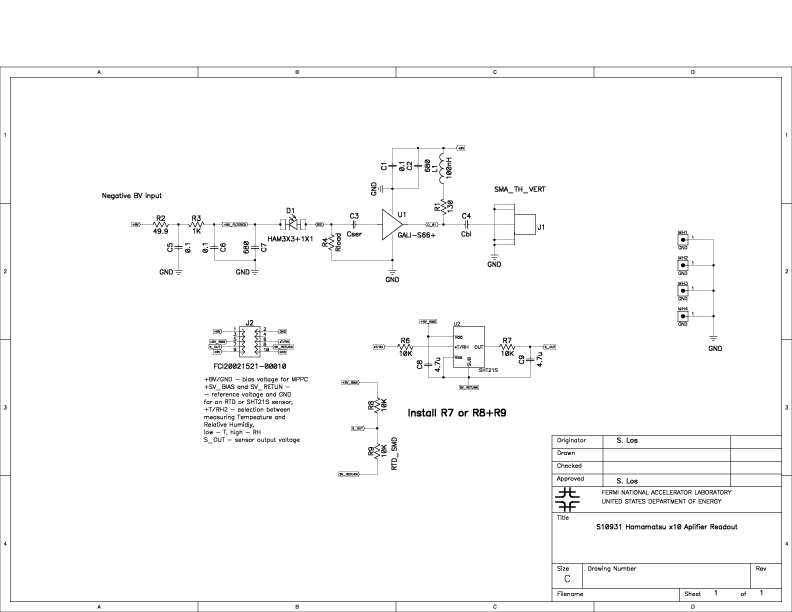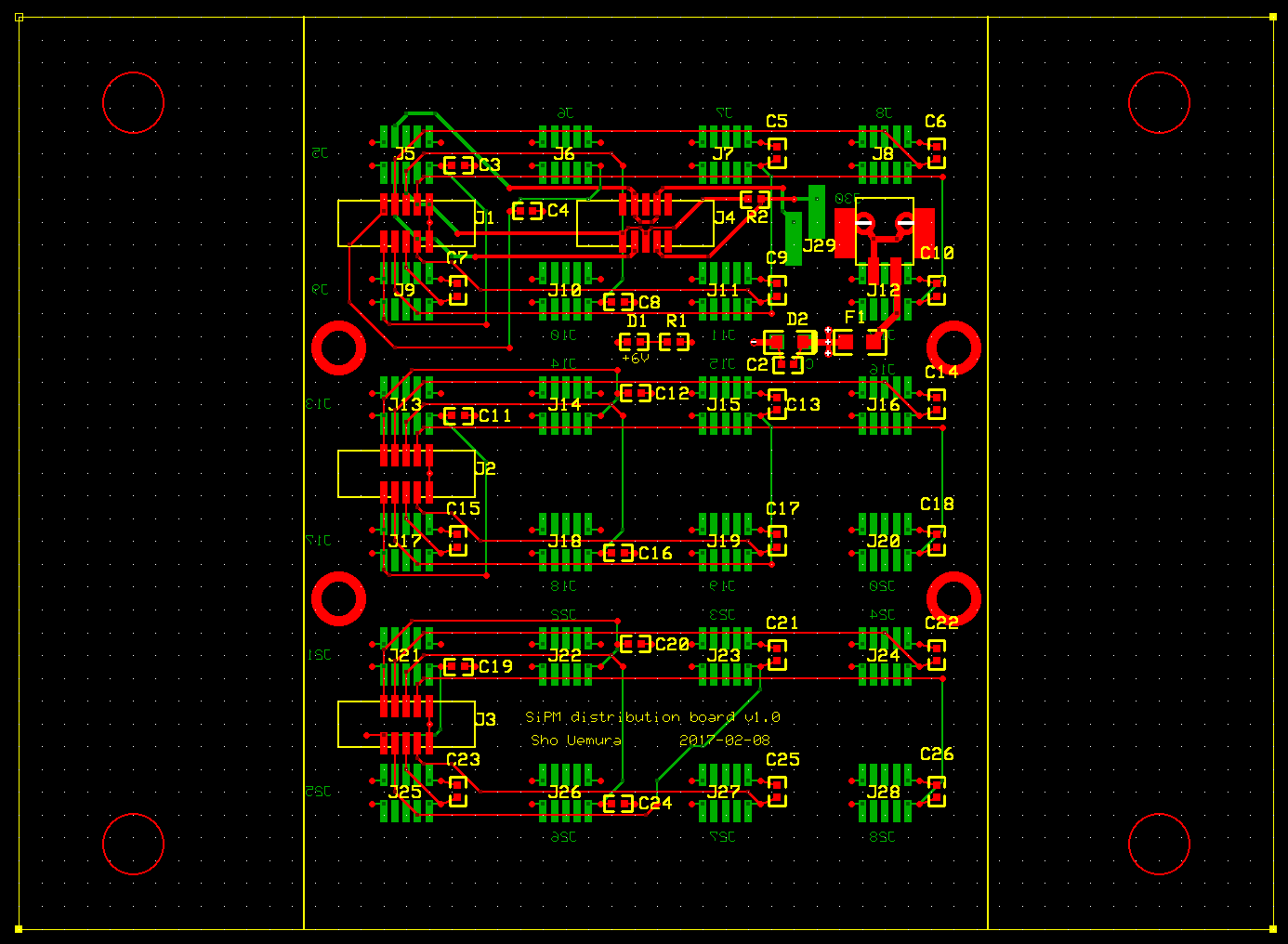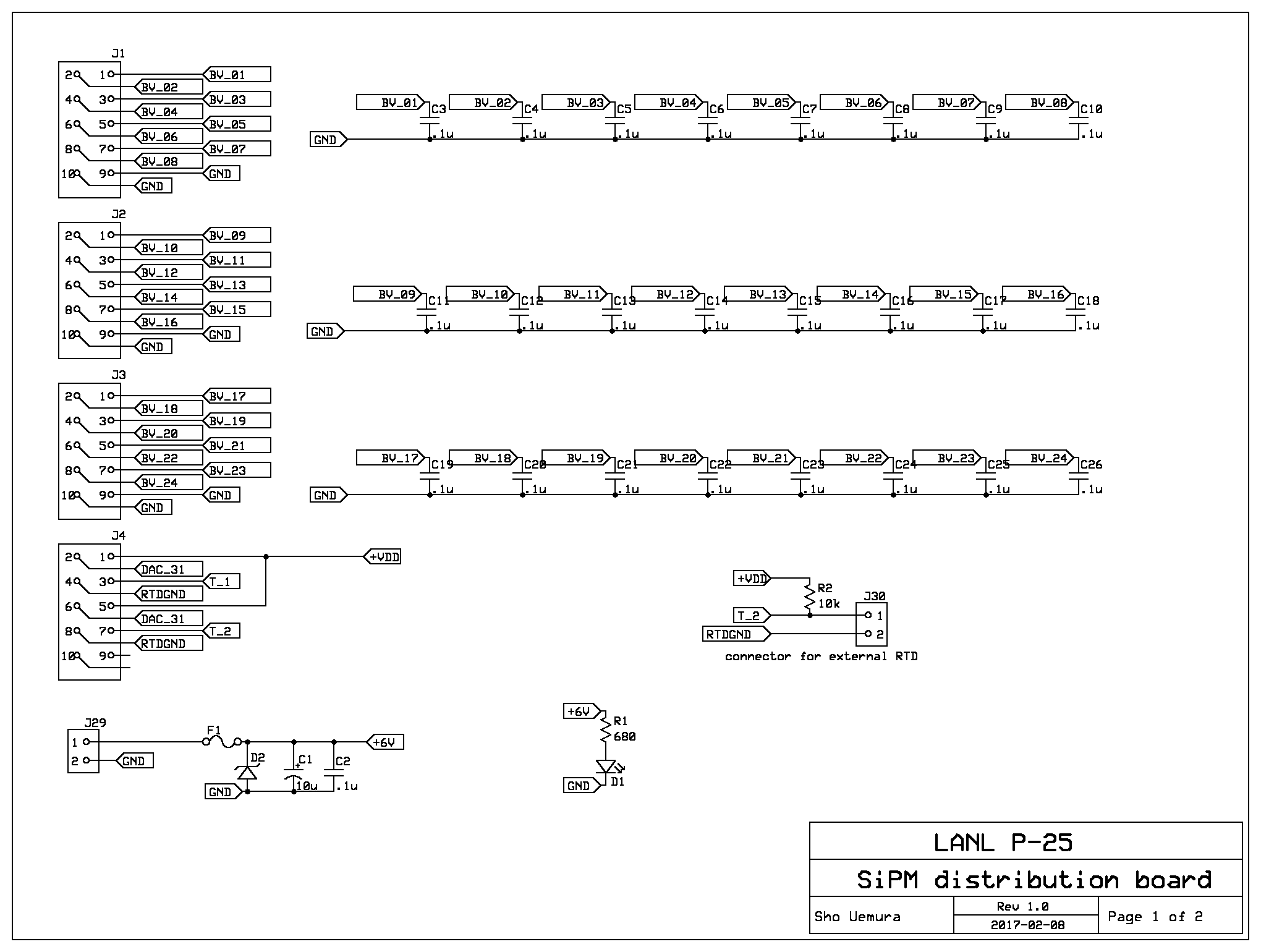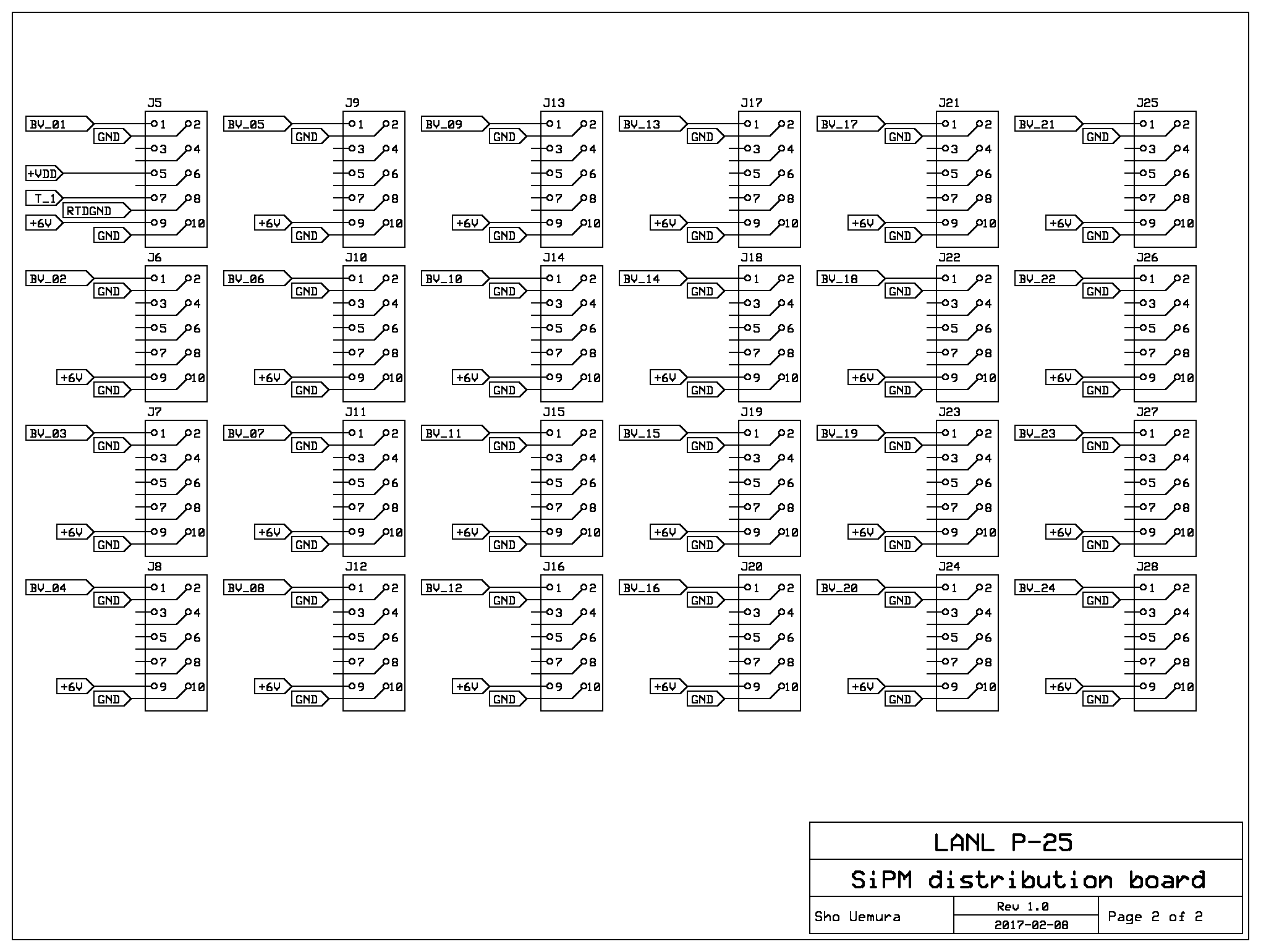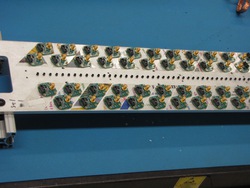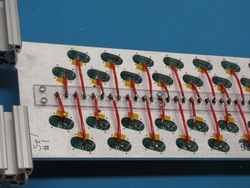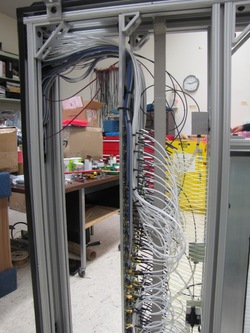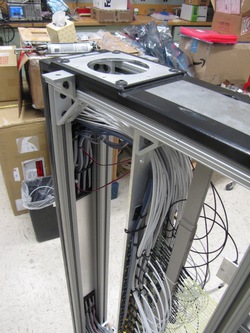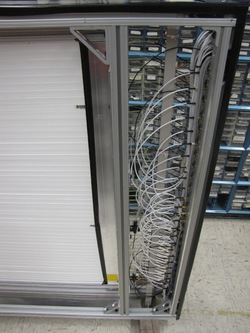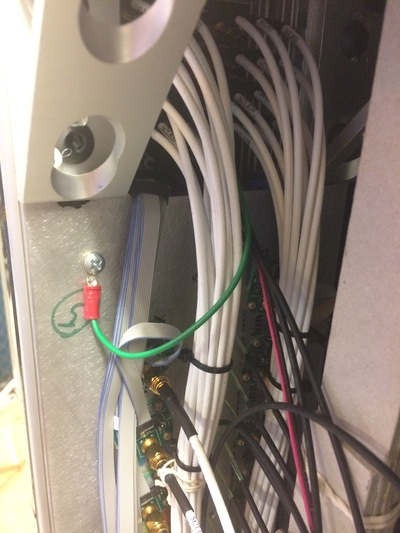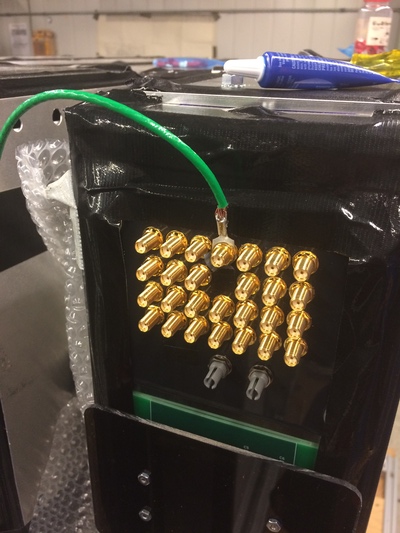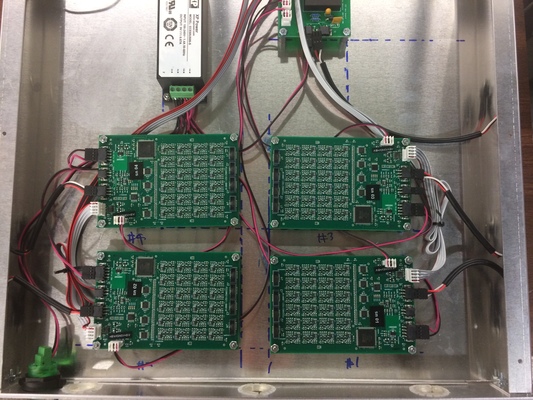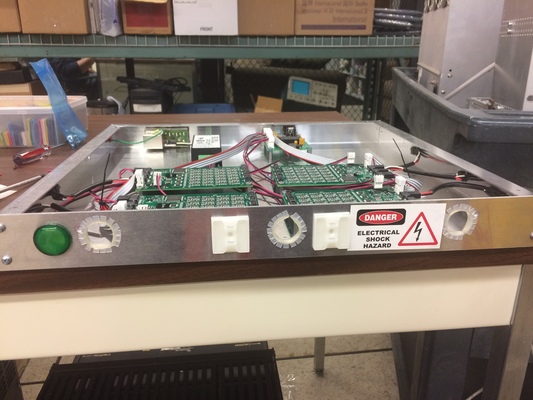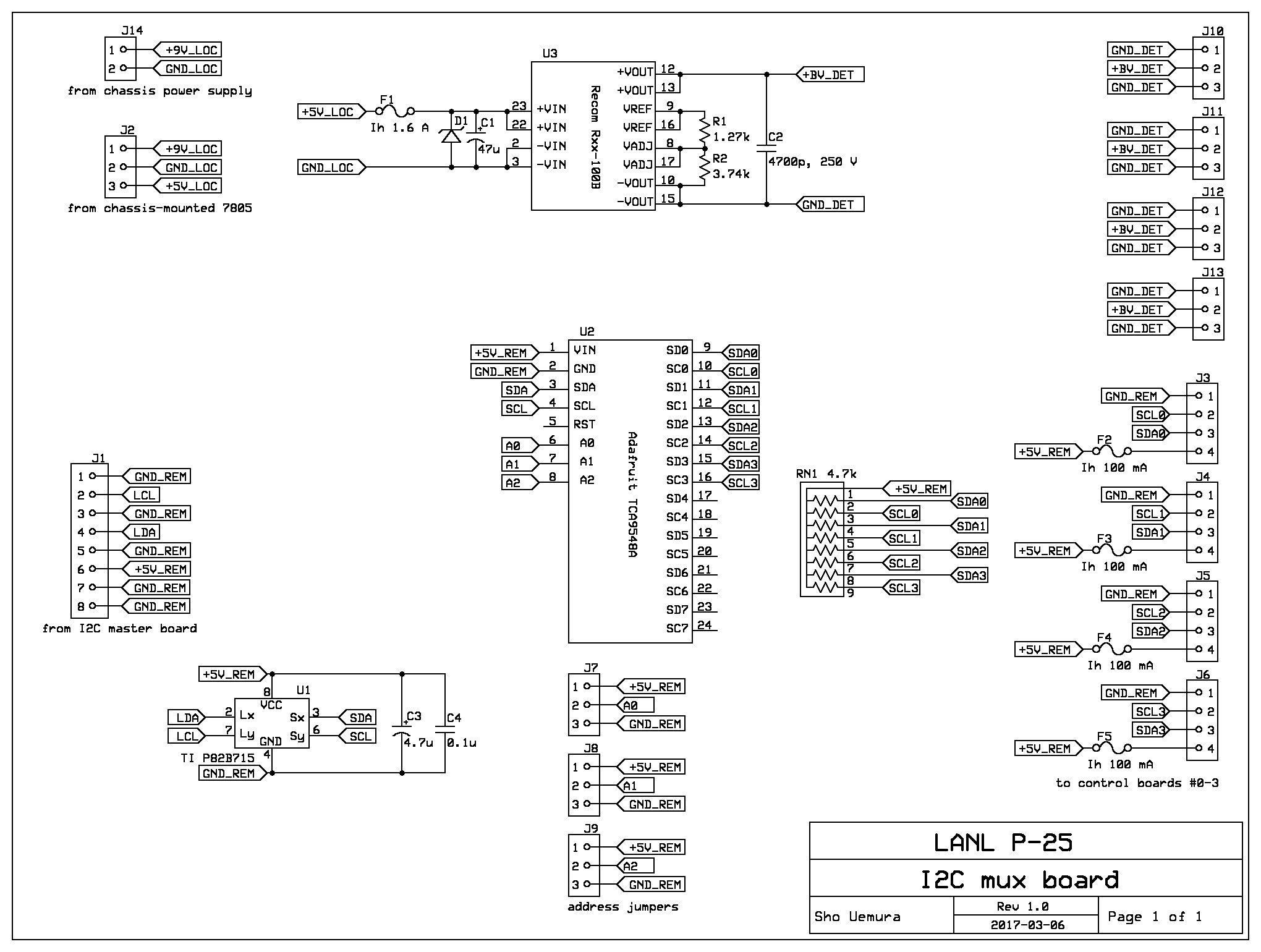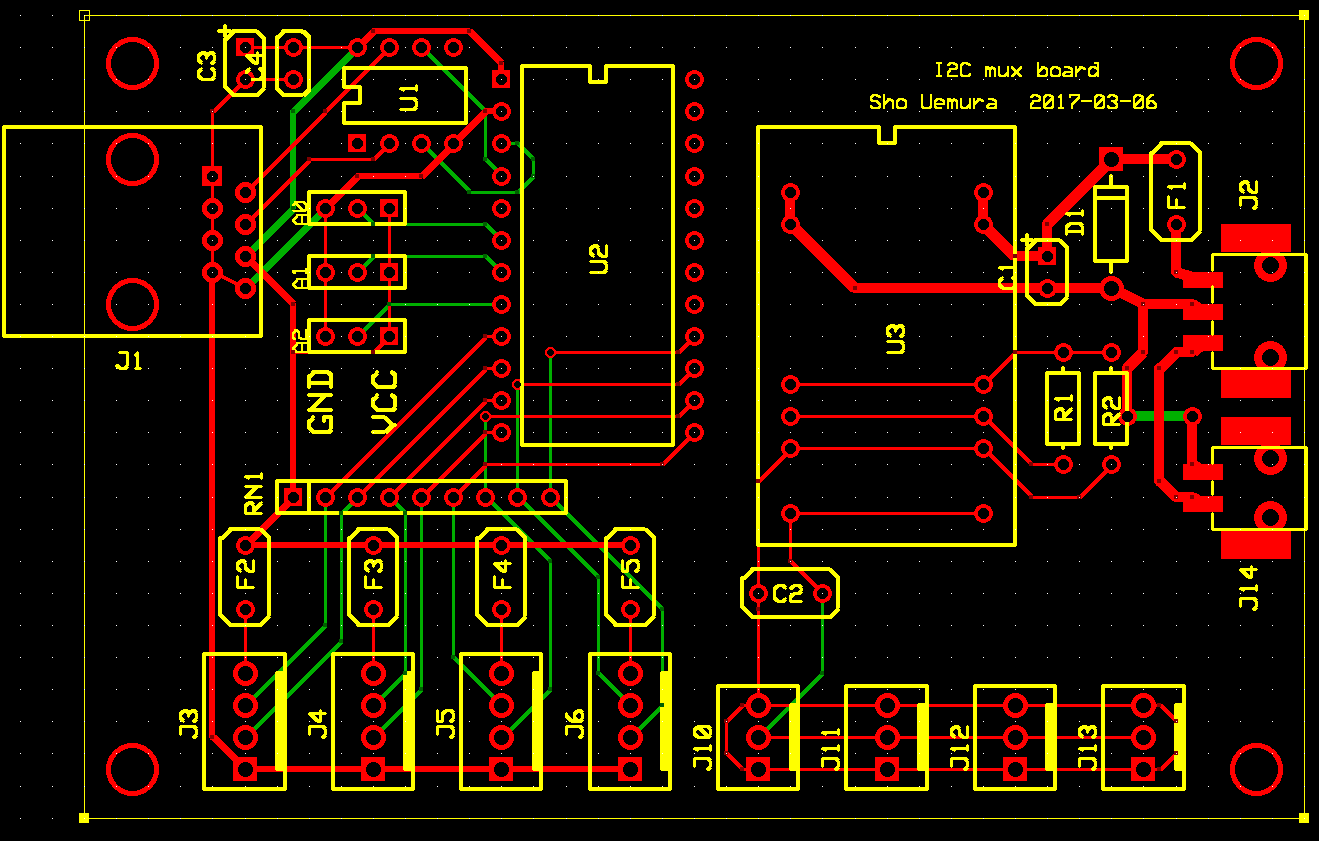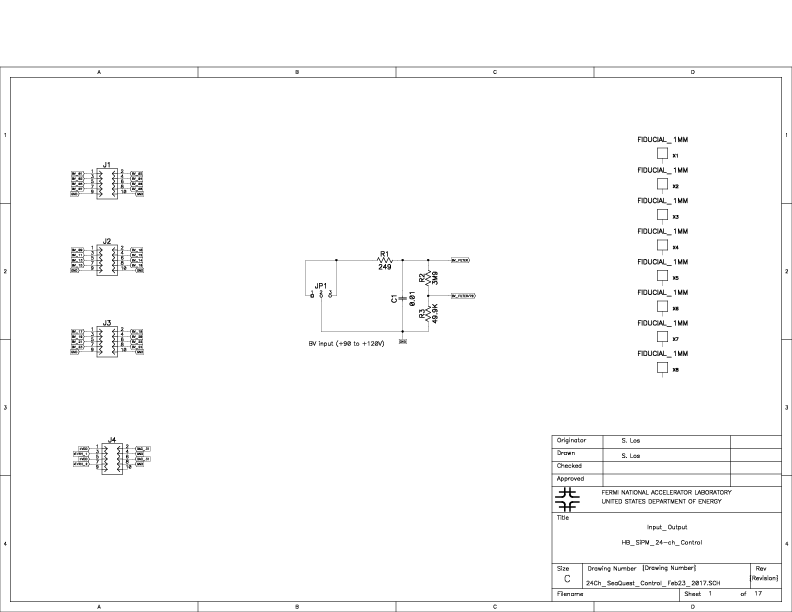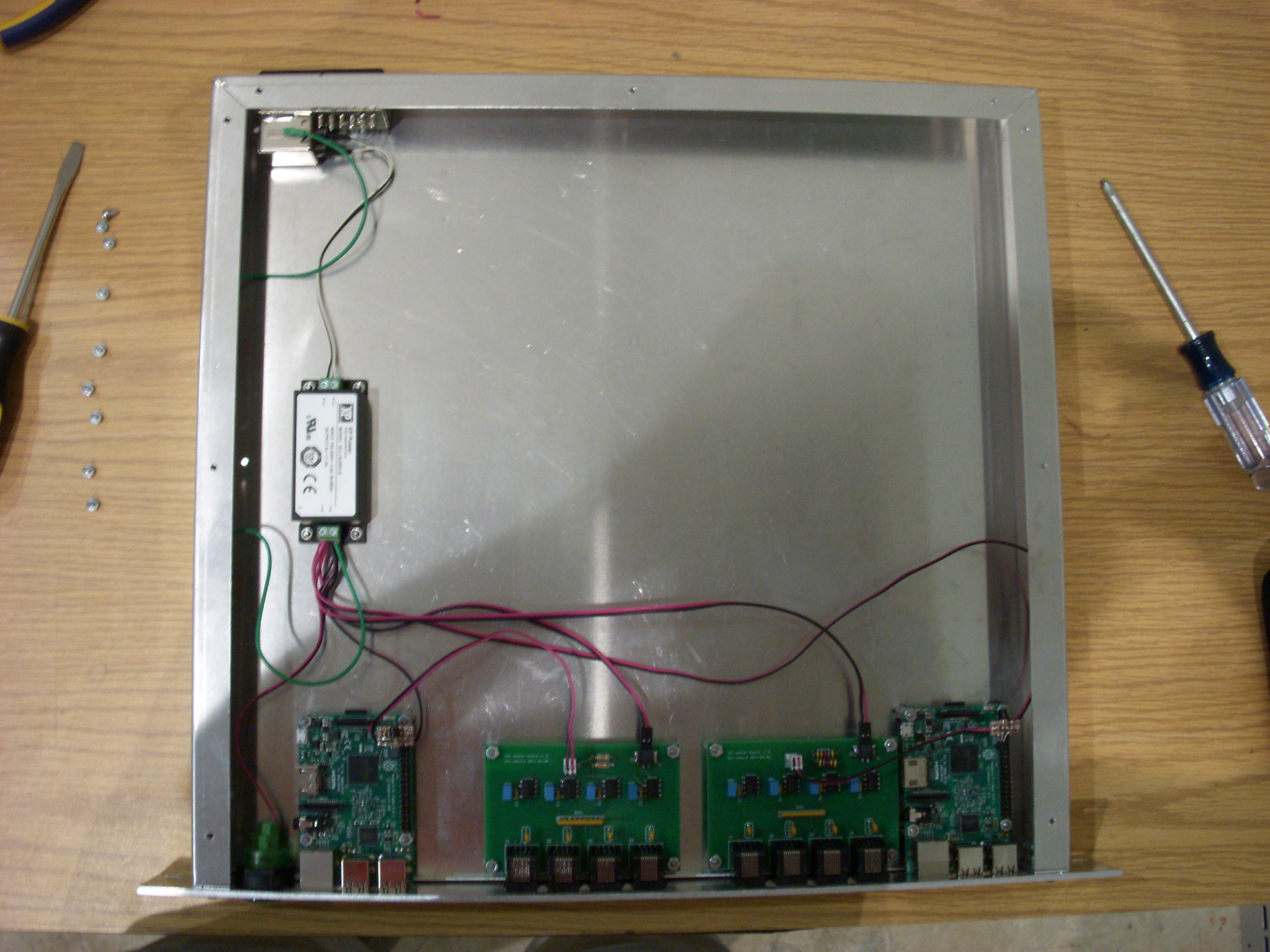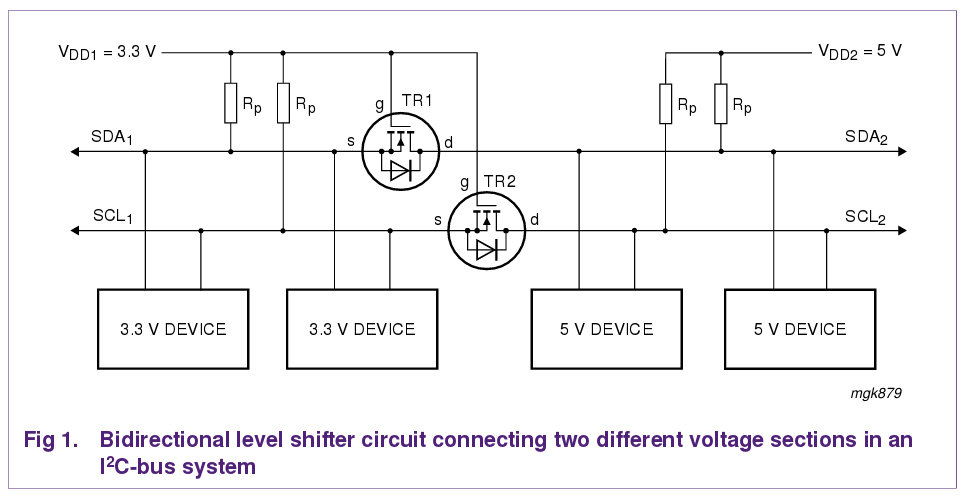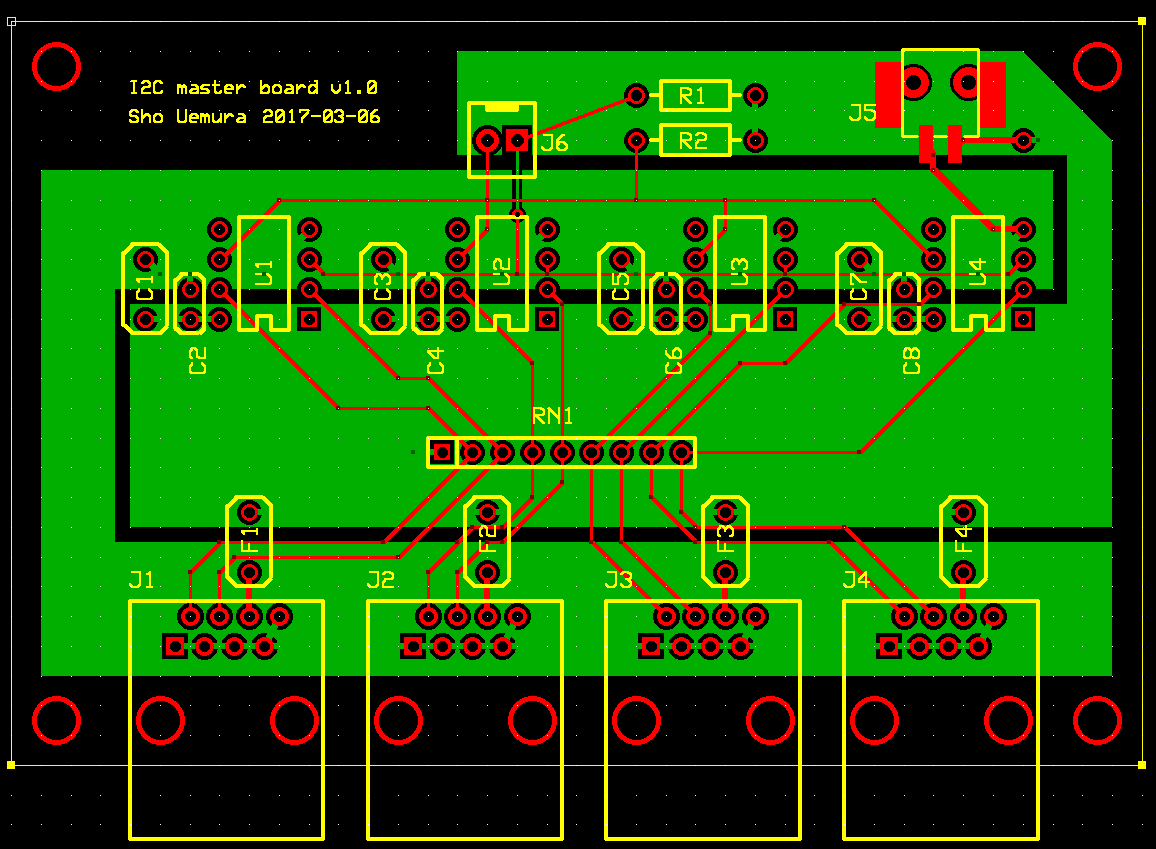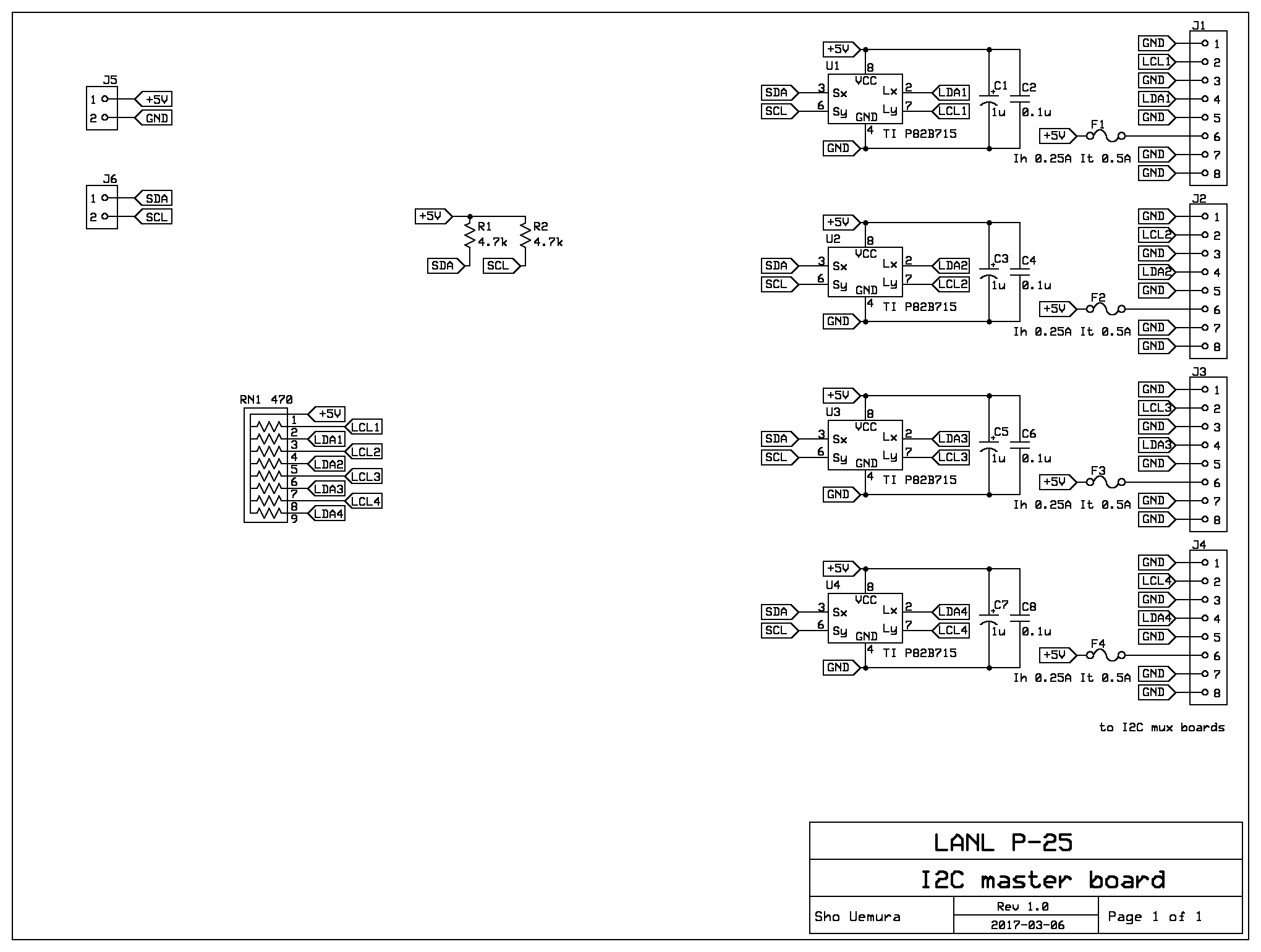| The power distribution for the hodoscopes is split into three parts: a master box that controls everything, six power boxes that generate the low voltage and bias for the hodoscopes, and the hodoscope boxes themselves. See links on the right for descriptions of the individual elements. | |
Electrical safety and system diagramsPower dissipation of hodoscope boxesEach detector box has either 80 channels (station 1 quadrant) or 50 (station 2 quadrant). Each channel comprises an SiPM and a preamp. In addition, each box has either 4 (station 1 quadrant) or 2 (station 2 quadrant) distribution boards. The SiPMs operate at bias voltages of between 53 and 56 V. The bias current is the sum of the beam-induced photocurrent and the constant dark current. The photocurrent is conservatively estimated at 10 microamps per channel for the highest-rate channels. The dark current will increase with irradiation, but is not expected to exceed 50 microamps per channel. Therefore, the maximum SiPM power dissipation per channel is 3.6 mW. The preamps are class-A amplifiers with an operating voltage of 6V and a bias current of 16 mA, for power dissipation of 100 mW per channel. Because of the class-A topology the power dissipation does not depend significantly on the hit rate. The distribution panels carry both the 6V low voltage for the preamps and the individual bias voltages for the SiPMs. The only power dissipated by the distribution panel is a 5 mA LED. From the above, the total power dissipation of each quadrant is estimated at 8.3 W for station 1 (80 channels), and 5.2 W for station 2 (50 channels). Circuit protectionAll power in the system is supplied by DC power supplies built into the master box and power boxes. The AC inputs to these supplies are protected by fuses in the power entry modules. These supplies have short-circuit protection.The master box supply (+5V) is rated at 3 A. All wiring powered by the master box is a minimum of 24 AWG, except for the long twisted-pair cable (Category 5) that carries I2C signals, which is 26 AWG; this cable is protected by a 250 mA polyfuse on the master board. The power box supply (+9V) is rated at 6.67A. All wiring powered by the power box is a minimum of 20 AWG, except for the bias voltages and the preamp power, each discussed below. The bias voltages are generated by a DC/DC switching supply inside the power boxes. This is set to output +100V and has short-circuit protection, with a maximum output power of 5W (so the output current is limited to 50 mA). Bias voltage is carried by 24 AWG wire inside the power boxes. The control boards regulate the bias voltage for individual channels using linear regulators with a maximum output current of 100 uA, and these voltages are sent to the hodoscope boxes on 30 AWG ribbon cable. Inside the hodoscope boxes, the preamp power (+6V) is distributed on 30 AWG ribbon cable. The 6V input of each distribution board is protected with a TVS zener diode and a PTC polyfuse. The polyfuse is rated at 1.1A, which is within the ampacity of the preamp ribbon cables. There is redundant protection on the control board inside the power box: the +6V is created by an external transistor, and there is a 1.25A fuse on the +9V supply to that transistor. GroundingThe master box and power boxes are standard 1U rackmount boxes, which are grounded through the AC line plugs. On the hodoscope boxes, the distribution boards are grounded through both the +6V supply and the bias cables; the preamps are grounded to the distribution boards and to the discriminators in the DAQ. The boxes themselves are grounded through a separate path: the preamp plate is grounded to a lug in the patch panel, and this lug connects to a grounding braid that runs to the DAQ rack. |
|
I2C controlAll of the voltages are controlled on the control boards, through I2C. We use isolators and I2C extenders to run the I2C lines from all of the control boards to two Raspberry Pis in the master box. Each control board has an isolator chip (Digi-Key 296-34872-1-ND). The isolated side is taken off on a 4-pin connector.An "I2C mux board" lives in each power chassis. This connects to the 4-pin I2C connectors on each control board. (The mux board also serves as the bulk BV source, but the BV half and I2C half are isolated from each other.) The mux board has an 8-channel mux (Adafruit's breakout board for the TCA9548A), which selects one of the control boards. The mux has an I2C address (0x70-0x77) that is selected by jumpers, so all six muxes can be put on the same I2C bus. An extender chip buffers the common side of the mux so the I2C bus can be put on a long cable. The cable is a standard Ethernet cable with a custom pin assignment, and the extender should be able to drive more than 30 m of cable. The mux board, and the isolated sides of the control board I2C isolators, are powered and grounded by the cable. The Ethernet cables connect to a master box, which contains a Raspberry Pi and two "I2C master boards." Each master board has four ports; each port has another extender chip and the I2C signals from all of the muxes are brought onto the same I2C bus. The mux and master boards use a 5V I2C bus, and the Pi uses 3.3V, so a small daughterboard sits on the Pi to do the level shifting. |
